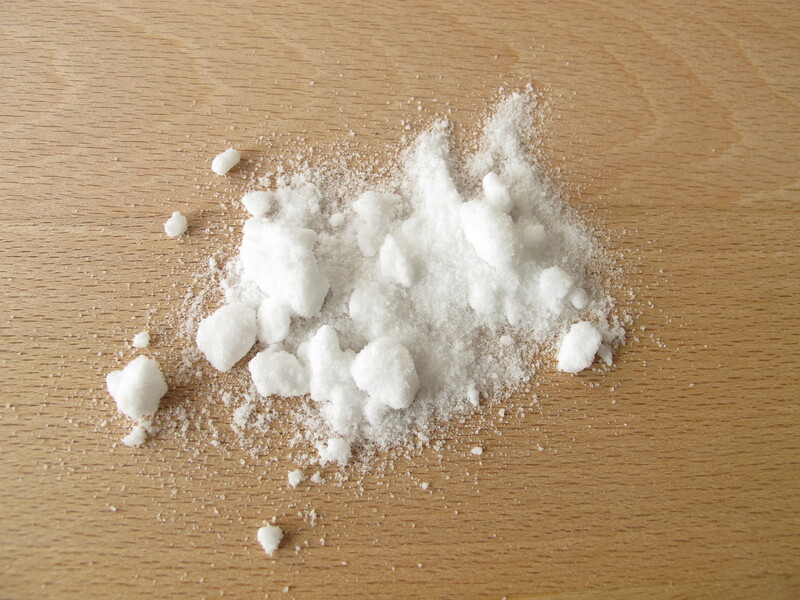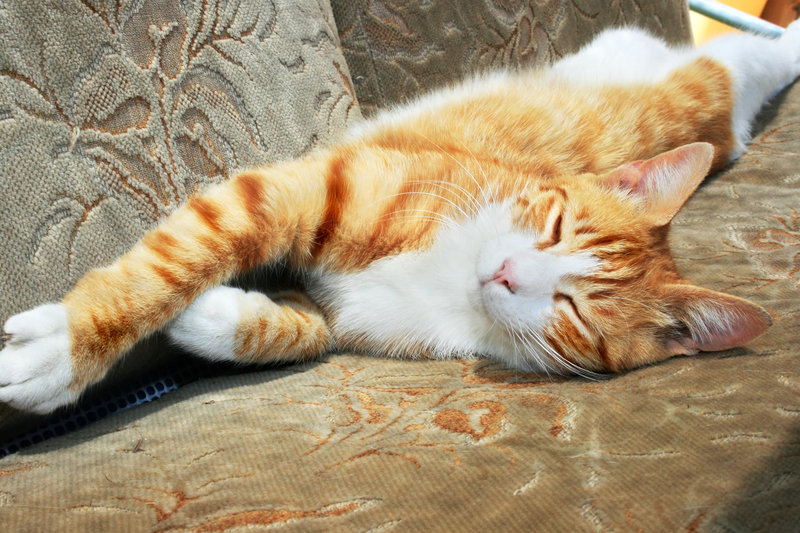Transform Your Stovetop by Removing Burnt-on Residue Swiftly
Posted on 19/05/2025
Transform Your Stovetop by Removing Burnt-on Residue Swiftly: The Complete Guide
Are you frustrated by stubborn, burnt-on residues tarnishing your stovetop? Unsightly burnt food stains and grease can not only diminish your kitchen's aesthetic but also impact your cooking experiences. This comprehensive article will show you how to remove burnt-on residue from your stovetop quickly and effectively. Whether you have a gas, electric, or glass top stove, follow these expert techniques to restore your appliance to a sparkling, like-new appearance.

Why Swiftly Removing Burnt-on Residue is Essential
- Prolongs Appliance Lifespan: Built-up residue can corrode stove surfaces and burners, leading to costly repairs.
- Enhances Kitchen Hygiene: Grease and burnt food are breeding grounds for bacteria and pests.
Improves Cooking Efficiency: Clean stoves distribute heat more evenly, resulting in better meal prep.- Simplifies Future Clean-ups: Regular cleaning prevents future stubborn build-up, saving you time and effort.
Common Causes of Burnt-on Stovetop Residue
Understanding why burnt stains frequently occur is the first step in prevention:
- Spilled food and liquids not wiped promptly
- Cooking at very high heat for prolonged periods
- Using cookware with warped or dirty bottoms
- Not cleaning after each cooking session
Essential Supplies for Removing Burnt-on Stovetop Stains
Before you begin transforming your stovetop, make sure you have these cleaning materials on hand:
- Baking soda
- White vinegar
- Microfiber or soft cloths
- Non-abrasive scrubbing pads
- Plastic scraper or spatula
- Lemon juice
- Dish soap
- Spray bottle
- Warm water
- Rubbing alcohol (for particularly tough stains)
Preparation: Safety First!
Before using any cleaning solution, always:
Ensure the stovetop is completely cool to prevent burns or cracks in the surface.- Unplug electric stoves or turn off the gas line for added safety.
- Remove grates, knobs, and detachable burners to access all affected areas.
How to Remove Burnt-on Residue Quickly: Step-by-Step Stovetop Cleaning
1. Initial Wipe-Down
Start by wiping your stovetop with a damp microfiber cloth to remove loose crumbs and superficial grease. This ensures you're only targeting the burnt-on residue.
2. Softening Burnt Stains
For both gas and electric stoves, softening the residue is key:
- Mix equal parts white vinegar and warm water in a spray bottle.
- Generously spray the burnt-on areas and allow the mixture to sit for 10-15 minutes. The acid in the vinegar helps break down tough, baked-on stains.
- Alternatively, cover the area with a damp hot towel for 15 minutes to loosen debris.
3. Baking Soda Paste: The Tried & True Solution
One of the most effective methods for removing burnt-on residue from your stovetop swiftly involves a simple DIY baking soda paste:
- Combine three parts baking soda with one part water to make a thick paste.
- Apply generously to the affected areas. Let it sit for at least 15 minutes (longer for severe burns).
- With a non-abrasive pad or a soft-bristled brush, gently scrub the area. Baking soda's mild abrasiveness breaks down residue without scratching surfaces.
- Wipe off the mixture using a damp cloth.
Tip: For extra cleaning power, you can add a splash of lemon juice or a few drops of dish soap to your paste!
4. Tackle the Toughest Stains with a Plastic Scraper
If some scorch marks remain, carefully use a plastic scraper or spatula held at a 45-degree angle. This lets you dislodge hard, burnt-on bits without damaging glass or metal surfaces. Never use steel wool or metal blades on glass stoves!
5. Glass Stovetop Deep Clean
Glass cooktops require special care:
- Spread the baking soda paste over burnt areas.
- Cover with a hot, damp towel and let it steam for 15-20 minutes.
- Carefully wipe and buff the surface with a clean microfiber cloth.
- If you have a glass scraper tool designed for cooktops, use it gently to remove remaining residue.
6. Final Rinse and Polish
After successfully removing the burnt-on residue, go over your entire stovetop with a clean, damp cloth to pick up any leftover cleaning agents. For streak-free shine, finish with:
- A final spritz of
white vinegar wiped down with a microfiber cloth - Commercial glass cleaner (for glass stovetops)
- Buffing with a dry cloth for a polished, like-new finish
Special Tips for Gas, Electric, and Glass Stovetops
Gas Stove Clean-up
- Remove and soak burner caps and grates in warm, soapy water for 30 minutes.
- Use a soft brush to clean crevices around burners.
- Never submerge gas burners with electrical parts; simply wipe these with a damp cloth.
Electric Stove Care
- Detach coil burners (if possible) and wipe down the drip pans with baking soda paste.
- For stubborn stains on the metal plates, use a non-abrasive sponge and avoid getting electrical connections wet.
Glass/Ceramic Cooktops
- Always use cleaning products specifically for glass stoves to avoid scratches.
- Never use abrasive scouring pads or powders.
- Use a razor scraper for stubborn marks, held flat to prevent gouging.
Eco-Friendly and Natural Remedies for Burnt-on Stovetop Grime
If you prefer green cleaning solutions, try these effective options for removing burnt-on kitchen residue:
- Lemon Juice: The natural acidity cuts through grease and leaves a fresh scent.
- Baking Soda: Non-toxic and ideal for scrubbing without scratching.
- White Vinegar: Dissolves mineral deposits and burnt sugar stains.
- Castile Soap: Gentle and effective for regular maintenance cleaning.
Pro Tip:
Use a combination of lemon juice and baking soda for an eco-friendly cleaning powerhouse that's safe for almost all household stove surfaces.
Preventative Measures: Stop Burnt-on Residue Before It Starts
Prevention is the best solution for keeping your stovetop free from burnt-on residue:
- Wipe spills immediately--before food or liquids have a chance to harden.
- Use cookware of the right size for your burners to avoid overflow.
- Lower the heat when cooking sugary or sticky foods.
- After every meal, do a quick wipe-down of your stovetop.
- Deep clean at least once a week to prevent stubborn build-up.
- Replace damaged or excessively dirty burner covers and drip pans.
Recommended Schedule for Stovetop Cleaning
- Daily: Wipe with damp cloth, remove fresh spills
- Weekly: Clean grates, burners, and drip pans; polish glass or ceramic tops
- Monthly: Inspect and deep clean or replace parts as needed
Quick Solutions for Last-Minute Cleaning
Got guests arriving soon? Use these rapid techniques for swiftly cleaning burnt residue from your stovetop:
- Soak a cloth with hot vinegar and lay it over the stain for 5 minutes, then wipe clean.
- Use pre-moistened cleaning wipes (safe for surfaces) for a rapid refresh.
- For glass stovetops, a dedicated spray cleaner can break up residue in minutes.
What to Avoid When Cleaning Your Stovetop
Not all cleaning methods are created equal. Protect your appliance by avoiding:
- Steel wool or metal scouring pads--these scratch surfaces and create micro-abrasions that trap dirt.
- Harsh chemical cleaners not intended for stoves--these can discolor or corrode surfaces.
- Using knives or metal blades to scrape burnt food.
- Leaving moisture under burners or electrical parts.

FAQs: Transforming Your Stovetop by Swifting Removing Burnt-on Residue
-
How often should I deep clean my stovetop to prevent burnt-on residue?
Ideally, deep clean your stovetop weekly, and wipe down daily. -
What should I do if commercial cleaners don't fully remove burnt stains?
Try natural solutions like baking soda paste and vinegar. To tackle extremely tough spots, apply a hot towel for longer, then use a plastic scraper gently. -
Can burnt-on food damage my stovetop permanently?
If left unaddressed, burnt food and residue can stain or corrode surfaces over time. Swift cleaning is your best defense!
Summing Up: Achieve a Spotless Stove and a Happier Kitchen
Transforming your stovetop by removing burnt-on residue swiftly is achievable with the right methods, tools, and preventative habits. By incorporating quick daily cleans with periodic deep-cleans using natural or commercial products, you'll maintain a pristine stovetop that boosts your kitchen's look, hygiene, and functionality.
Don't wait for stains to become eyesores--start your stovetop makeover today! You'll enjoy better cooking experiences and a kitchen that always shines. If this guide helped you, share these stovetop cleaning tips with friends and family, and cook on with confidence!




